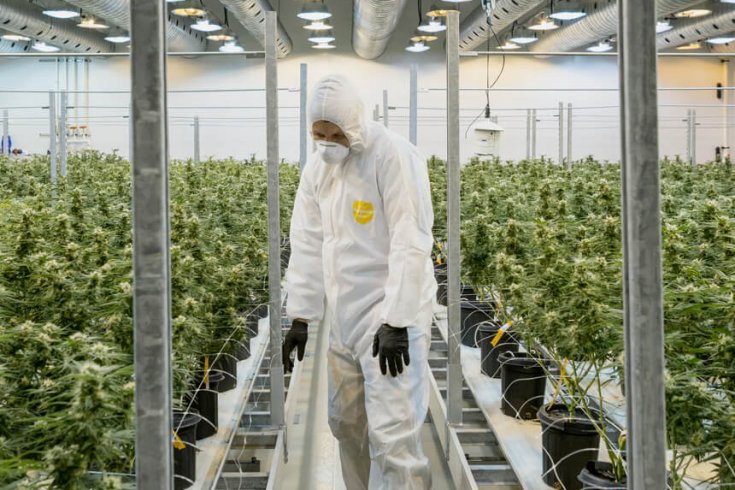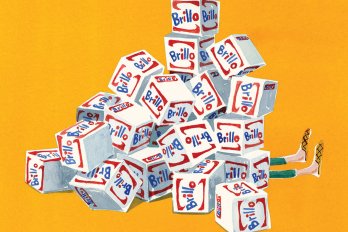It was rush hour on a mid-May morning, and Bruce Linton, CEO of the world’s largest producer of legally grown, sold, smoked, vaped, and consumed marijuana, sat in the driver’s seat of a rented Dodge Charger, heading south, against Toronto traffic, on his way to wine country. He kept the speedometer at a respectable, but law-bending, 120 kilometres per hour, except when trucks or cars got in his way. Then the forty-nine-year-old pressed on the throttle.
It wasn’t yet 8 a.m., but Linton had been up for four hours, having woken around 4 a.m. next to his wife in a quiet and leafy part of the capital once known as the home of the Ottawa Senators and the rest of the city’s nouveau riche. He’d begun his day by pacing around his house in the dark and looking out at his swimming pool while he fired off a dozen emails. Then he’d driven to the airport and caught a plane to Toronto. I’d jumped in the car with him shortly after 7 a.m. and had been throwing questions at him ever since.
Linton’s eyes darted between the open road and the passenger seat, where I scribbled his words into a notebook. He waited for my pen to catch up. “If you really want to get all of this, we need to do a book,” he said. Then he recounted how he and a small team of tech and policy geeks with Bay Street cred had turned an abandoned Hershey’s factory into the most recognized grow op on the planet, and how they were now inking deals with industrialists in Germany, horticulturalists in Australia, sexual-aid manufacturers in Colorado, and celebrities in California. It’s all part of a fast-moving game that, if won, could leave Linton and his executives at the helm of a billion-dollar company when recreational pot becomes legal in Canada.
The needle crept toward 130 kilometres per hour as Linton described a future in which Canada would supplant Israel as the global leader in the scientific research of cannabinoids while replacing the Netherlands as cultural homeland of marijuana innovation and export. It’s a grand dream, to be sure, but one he insists is quickly becoming a reality. Headquartered in Smiths Falls, Ontario, his three-year-old company—Canopy Growth Corp.—is emerging as a national cannabis conglomerate. At the time we spoke, Linton was in advanced negotiations to get the high-cannabidiol strains he was growing in Scarborough sold in pill and oil form at pharmacies across the country. But it was his vision for the tetrahydrocannabinol (THC) drawn from the weed in his Niagara-on-the-Lake greenhouse that seemed truly inspired.
It’s a two-stage plan. First, he’ll let customers get used to seeing a range of his combustible marijuana strains for sale in the same stores that carry traditional liquors. Then he’ll release a line of drinkable cannabis products. Linton sees a world in which THC will become one of the main ingredients inside corked bottles of what future generations will consider premium booze. THC-laced soda pop is already available on the black market, and people have been infusing liquor with cannabis at their homes for years. Linton is going to take it mainstream, challenging the spirits establishment by producing an entirely new beverage that offers a different sort of buzz. Most people still think of pot as something to smoke and vape, or as something that can be added to food. Linton wants to show it can be so much more.
Shortly before 9 a.m., we started to see signs for the United States border. “We’re running early,” Linton said. “Let’s get breakfast.” He pulled off the highway and made for a McDonald’s drive-thru. He ordered an extra-large coffee and two breakfast burritos for himself and an Egg McMuffin meal for me.
We sat in the parking lot and ate off our laps. Between bites of salsa-doused burrito, Linton explained how rare it is to witness the birth of an industry, especially one based on a known commodity with a pre-established market. The drug already has a multi-generational user base estimated at seven-million people in Canada alone. Linton is determined not just to reach as many of those people as possible, but also to access the worldwide market. “Three years ago, I knew nothing about growing pot,” he confessed. “Now I’m the CEO of the biggest grow op willing to publish its address.”
At times, Linton sounded less like a traditional drug-policy reformer and more like a corporate monopolist. There are those who criticize him for this, but he doesn’t seem to care.
The cultural and political landscape surrounding marijuana is changing fast, and Linton, more than anyone else, seems primed to profit from it. The Trudeau government has promised to do what only Uruguay had done before: declare a national end to the prohibition on the recreational growth, sale, and consumption of marijuana. Linton’s company—and his country—is set to spearhead a global movement.
“Cannabis is going to be the great disruptor of our time,” he said. “Once the recreational markets start opening up, this whole industry is going to explode. We’ve got a three-to-four-year lead over the rest of the world, but we gotta make sure we don’t lose it.” He scrunched up his burrito wrappers and tossed them into the paper takeout bag by my feet; then he peeled the free-coffee stickers from both our cups and stuck them to the back of his BlackBerry.
“I love any company with a loyalty program,” he said. Then he fired up the Charger and asked, “Are you ready to see the Farm?”
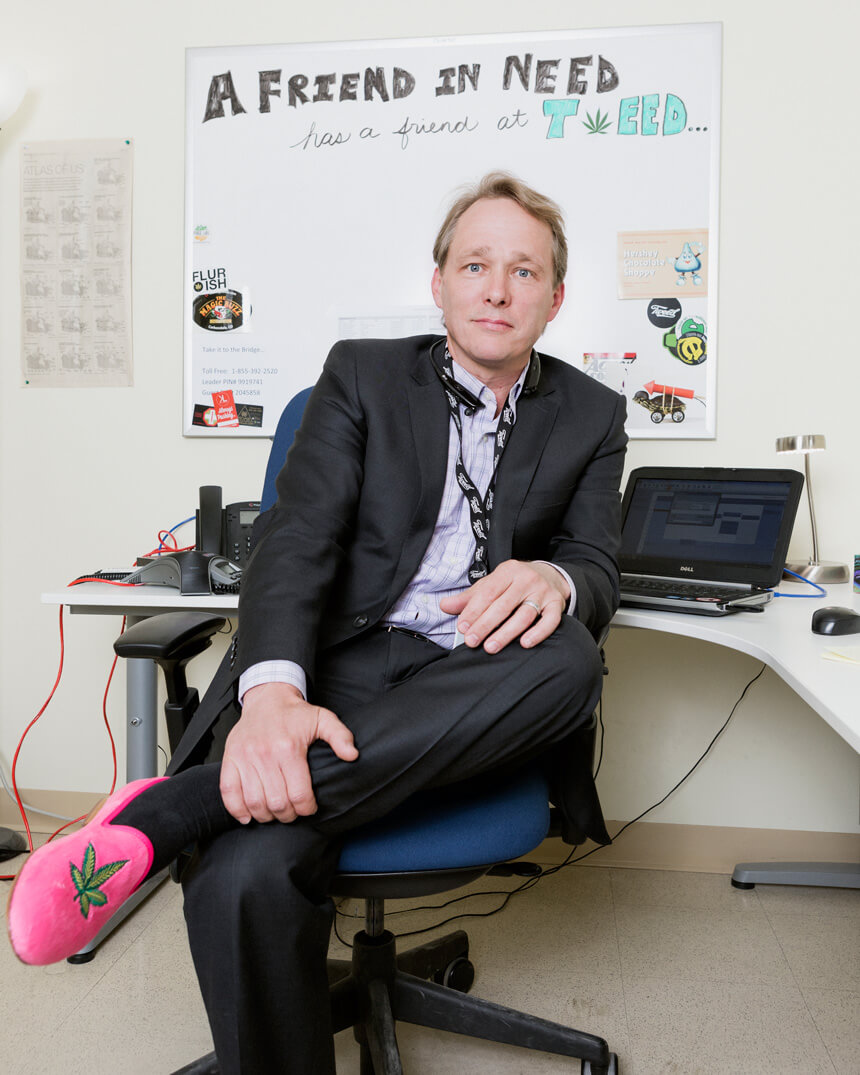
It’s somewhat ironic that Canada is now emerging as a pioneer in the legalization of cannabis. The country was one of the first to criminalize pot, declaring it illegal fourteen years before the United States introduced its Marihuana Tax Act of 1937 to effectively ban the drug’s usage. Thirty-five percent of Canadians still support pot’s criminalization.
Humans have consumed cannabis for at least 5,000 years. The weed is said to have originated in Central Asia, where the Chinese used it for medicinal purposes. It appeared in the writings of Herodotus, who described Eurasian nomads burning “hemp-seed” in their steam baths to joyous effect. And it sailed with the Spaniards to the Americas shortly after Columbus. George Washington, Thomas Jefferson, and John Adams are all known to have at the very least grown it.
Canada developed its first drug policy in 1908. The first prohibited substance was opium, which was, at that time, smoked recreationally in dark dens and available in pill and liquid forms in pharmacies across the country. Citizens first learned of the “new menace” to society—“marahuana”—in 1920 thanks to Emily Murphy, a renowned suffragette and Canada’s first female magistrate. Her writings in Maclean’s magazine helped bring about a national drug panic that was largely fuelled by racism against the Asian community in British Columbia. Three years later, marijuana was added to Canada’s list of illegal drugs.
There doesn’t seem to be any proof that anyone was actually smoking the stuff on Canadian soil until nine years later, when police first confiscated a cache of marijuana cigarettes. By then, the prohibition on alcohol in Canada had fallen away, and the rum-runners who’d been profiting from the illegal sale of domestic liquor were among the country’s richest entrepreneurs, having made a fortune smuggling contraband into the US (which remained “legally dry” until 1933).
Linton and others hope that history will repeat itself. It was during those years when liquor was legal in Canada but illegal in the US that the Seagram Company of Montreal became the world’s largest distiller. Indeed, the idea of becoming the Seagram of weed is what inspires Linton. At its peak, Seagram was a major player in everything from liquor and movies to theme parks and crude oil. As Linton sees it, his company has the potential to be all of those things, and more.
Founded in early 2013, Canopy (originally known as MABH Ontario Inc.) was the brainchild of Linton and a man named Chuck Rifici, a long-time CFO of the Liberal Party of Canada (who is now suing Canopy for wrongful dismissal). It’s not clear which man deserves most of the credit, but their idea seems to have taken shape when one, or both, began reading about a prospective shake-up in the country’s medicinal marijuana laws. Then, in June 2013, in a bid to “streamline” the existing program, Health Canada announced that it was preparing to privatize the market, granting a small batch of licences to Canadians looking to start their own grow ops.
By December 2013, MABH Ontario Inc.—renamed Tweed Marijuana Inc.—had five employees and was at the top of the list of producers waiting on a licence to sell. A month later, it received approval. Three months after that, Tweed became the first marijuana producer to be publicly traded on the TSX Venture Exchange. Overnight, its market value blew up to $89 million—although it had not yet sold a single gram. Seventeen months later, it had 6,000 customers, had gobbled up a major competitor—the medical-marijuana firm Bedrocan, which operates out of a Scarborough warehouse—and adopted its current name: Canopy Growth.
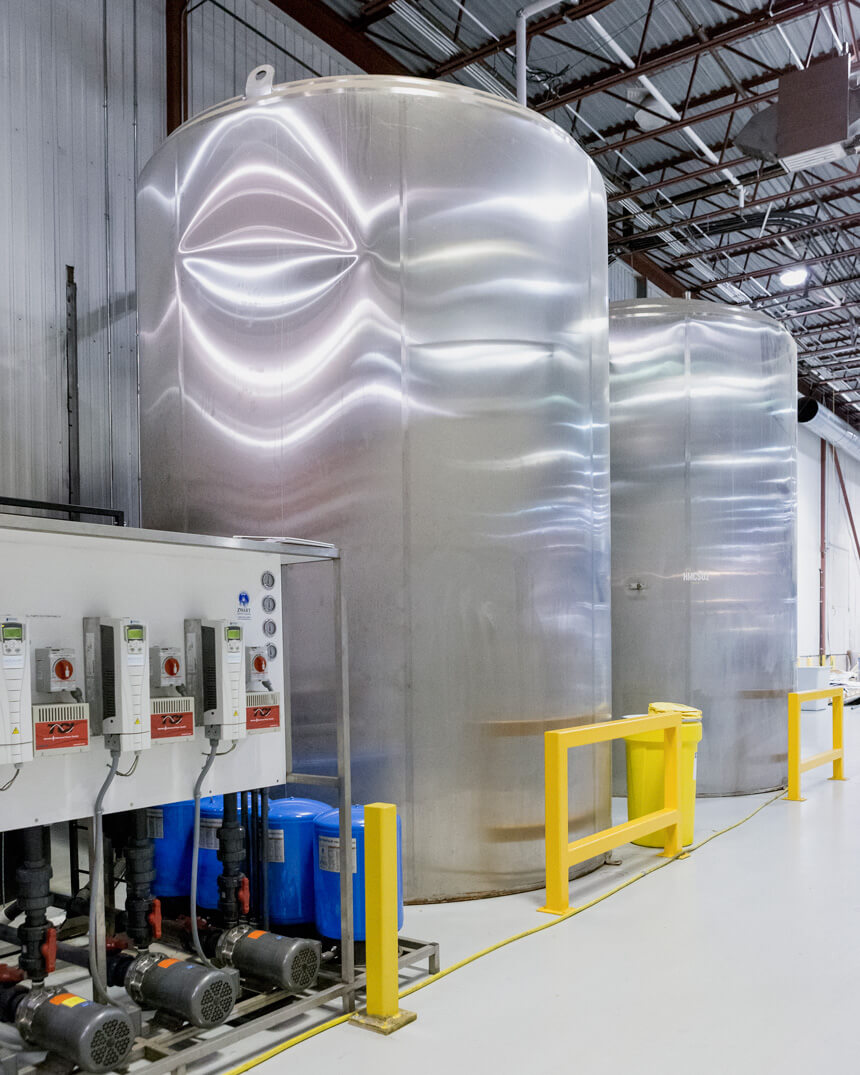
“The Farm,” as Linton calls it, is a 350,000-square-foot greenhouse located in Niagara-on-the-Lake, just a ten-minute drive from the US border. When Linton and his company purchased it in June 2014, it was an empty glass building with a soil floor that had once grown eggplants. Now it was the largest known marijuana facility in the world. It operated at up to 20 percent capacity through 2015, but was now undergoing a massive retrofit in preparation for a full summer harvest. Linton had ordered that the entire greenhouse be growing weed by the summer of 2016 as an “efficiency drill” to ensure that the 100 employees who worked at the Farm could actually handle the output. His directive followed comments made by Canada’s health minister Jane Philpott on April 20, when she stood before the UN General Assembly in New York and promised Canadian marijuana legislation by the spring of 2017.
With a timeline for the legalization of the recreational market seemingly in place, Linton believed it was crucial that Canopy Growth max out its current capacity and produce 15,500 kilograms of bud annually. But the company would have to get even more space to grow if it wanted to maintain its dominant 27 percent share of Canada’s current $100 million medicinal market, as well as grab a similar share of the estimated $10 billion legal recreational market.
Linton parked the Charger outside what looked like a steel barn—an open-concept office built on the side of the greenhouse. “I’m going to give you the investor’s tour,” he said. Then he put on a lab coat, handed me two hair nets—one for my head and another for my beard—pressed his thumb on a biometric scanner, and unlocked the door to the greenhouse, which was two-and-a-half times the size of the baseball field inside Toronto’s Rogers Centre. “If you look closely from one end to the other,” he joked, as I gazed out on the botanists and biotechnicians in the distance, “you can see the curvature of the earth.”
For all its size, the greenhouse was empty of plants. Linton opened his arms wide and said, “By Canada Day, this place will be filled with pot.” Then he walked out onto a white plastic sheet, stood between irrigation pipes and a smattering of high-powered fans, and said, “If we came back here in a few months and stood exactly where we are, you wouldn’t even be able to see me.” Then he revealed an entirely new aspect of his vision: “We’re going to grow experimental marijuana trees,” he said, explaining that the plan had been suggested by a Penn State tissue culture propagation specialist the company had hired. “Thick trunks, in 170-litre pots. They’re going to be like oak trees. No one, as far as we’re aware, has ever tried to see how big you can grow these things.”
Just after 11 a.m., Linton looked at his BlackBerry. “We need to get back on the road,” he said. He had a meeting in Toronto with a major pharmaceutical company and didn’t want to be late.
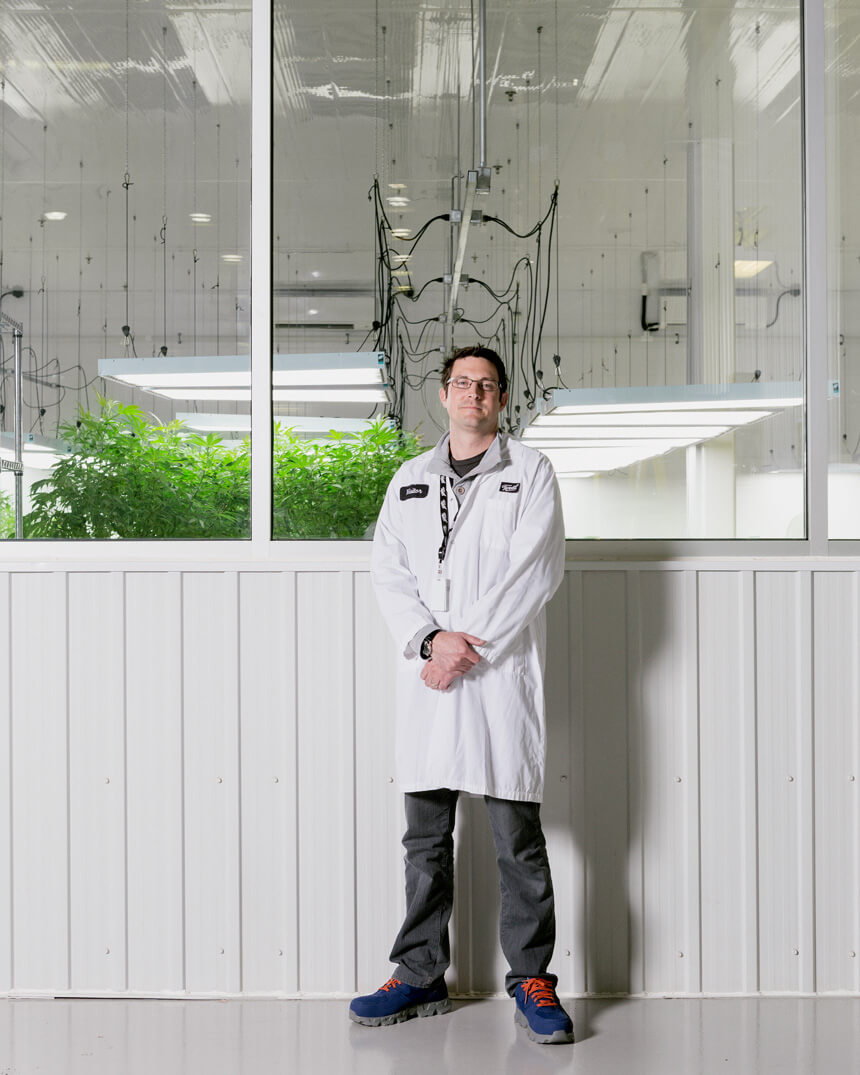
Imet Linton again a few days later in the mezzanine of his converted chocolate factory in Smiths Falls, Ontario, a small town about an hour’s drive from Ottawa. Unlike at the Farm, where the marijuana plants basked in the sunlight, everything grown inside the second facility did so under a fluorescent glow. The factory had served as the company’s headquarters since August 2013, when Rifici and Linton beat the cobwebs out of the doorways, scared the rats out of the machinery, and saved the building from demolition. Abandoned relics from its original owner, the Hershey Company, were proudly displayed on the walls. Vintage ads for Klondike Cough Nuggets and Reese’s Peanut Butter Cups hung next to shelves with high-end vaporizers and empty medicinal weed jars.
It was just after noon, and Linton was already behind on the to-do list he’d written on a Post-it. The first item involved printing out a homework assignment for one of his sons. Now he was preparing for item number four, “Fraud audit with Deloitte,” and the equally intriguing number five, “Meet Colorado sex guys.”
Linton invited me into his office, which had a “Mr. Wonka” nameplate on the door. He twisted the top off a bottle of Canadian Tire–brand water, took a swig, and began dialing a number on his phone. Soon, he was on the line with the owners of a Colorado-based sex-spray company that claimed to have harnessed the “therapeutic aphrodisiac” within cannabis and was now making a niche for itself by producing “the first marijuana-infused personal lubricant for her pleasure.” It took an hour before Linton was done negotiating the beginnings of a licencing agreement to sell the Colorado company’s line of products—which included suppositories it claimed could both relieve menstrual pain and boost sexual pleasure. No one on the call knew what the deal should be worth. Still, sex and weed seemed to go together, at least in the minds of the suppository guys, and Linton wanted a cut in case they were right. When the call ended, he got up from his chair with a bolt of nervous energy and said, “This is the most exciting part about all of this.”
“The sex spray?” I asked.
“People are just starting to figure out all that can be done with this stuff. We’re not just growing pot. We’re growing cannabinoids.”
It has been 211 years since scientists first extracted morphine from opium and began using it for medicinal purposes—a historical development that Linton believes is relevant to the future of marijuana. “Who smokes opium anymore?” he asked. Linton believes his crops will soon be used as a sort of opioid-light—a less addictive, less harmful, and ultimately lifesaving alternative to the roughly 20 million prescriptions for opioid-based painkillers being written in this country every year.
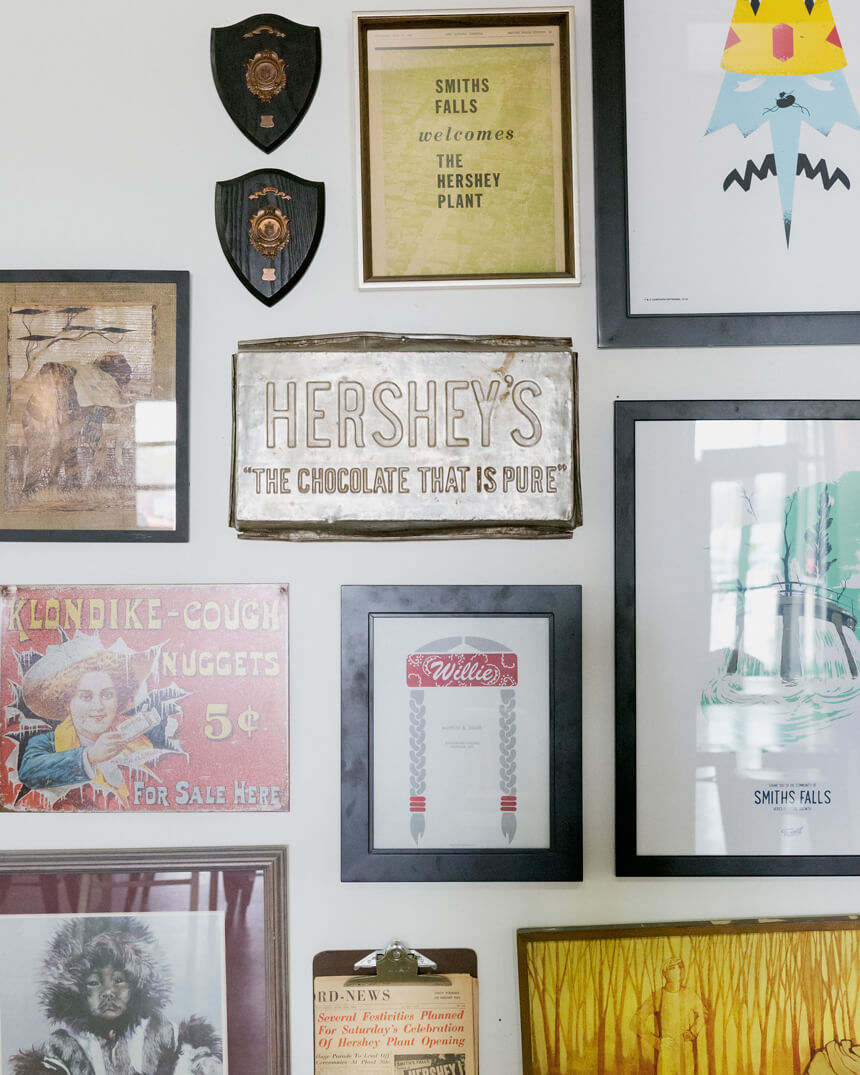
He cracked open another bottle of water and scratched two items off his list. It was the top of another hour, and he was late for his next call, this one with Bay Street fund managers. He wanted to partner with big business and Canadian universities on an independent scientific lab to supply data on the effects of marijuana. They’d investigate claims that cannabis could heal concussions, and he could already see the lab producing time-released cannabinoid pills to help people sleep. “This is the logical next step,” he said. All he needed was $5 million to get started.
Linton was on to something, and everyone on the call knew it. Most of the arguments for marijuana’s medicinal merits are based on little more than anecdotal evidence, even if doctors are already prescribing it in Canada as everything from a chronic-pain reliever to a wonder drug that may stop seizures among epileptic children.
There’s little clinical understanding of cannabis, largely because some countries (including the US) still officially consider it to have high abuse potential and no recognized medical use. Though a Canadian academic was part of the international team that mapped the plant’s genome, the most significant research has thus far originated in Israel, where, in 1963, an organic chemist named Raphael Mechoulam examined five kilos of confiscated Moroccan hashish. He injected its chemical compounds into a group of aggressive monkeys. When the monkeys began to calm down, he knew he’d found the psychoactive ingredient he’d been looking for—one now known as THC.
Mechoulam isolated another well-known cannabinoid from the hash: cannabidiol (CBD), a non-psychoactive ingredient that seems to have the most potential to relieve pain. Subsequent studies have found more than seventy different cannabinoids in weed, all of which can be bred into unique strains that smell and look different from one another. Each contains a different ratio of individual cannabinoids and therefore affects humans in a different way. The CBD-heavy ones, which are most commonly drawn from the small and bushy indica plant, tend to leave users feeling physically mellow, sleepy, and relaxed. These are the types most commonly prescribed for their medicinal value. But it’s the THC-heavy strains, which come from the much taller, loosely branched sativa plant, that produce mental highs—and are likely familiar to Canadians who get their bud in zip-lock baggies on the street.
The difficulty, for Linton, was going to be selling to all those people who just want to kick back with some cannabis—without compromising the company’s medical credibility. To accomplish that, he was willing to split his company in two. He’d leave the medical side in the hands of pharmaceutical-grade pot producer Bedrocan. And he’d leave the recreational side to a Cambridge-educated lawyer who knew Snoop Dogg well enough to know you never called the rapper by his given name.
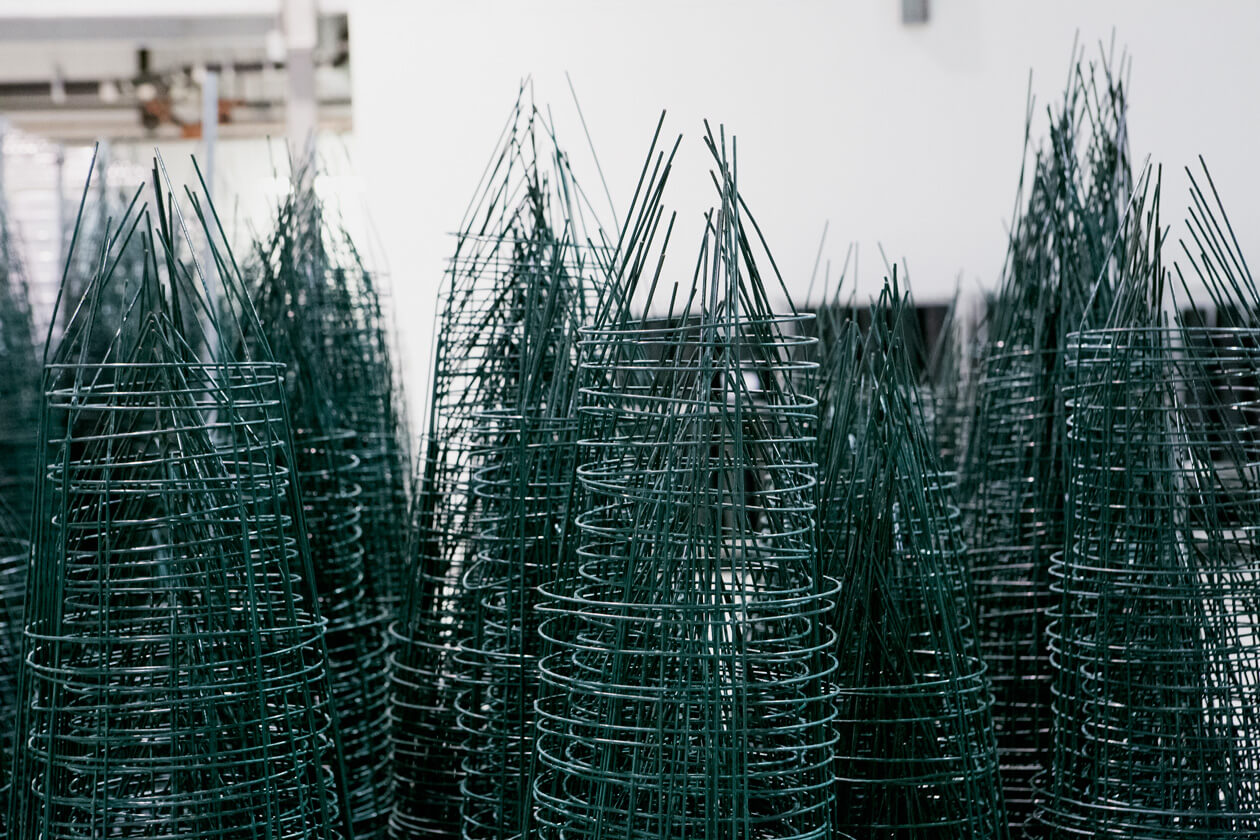
His pay stubs still say he was employee number five. But in reality, Mark Zekulin has become Linton’s number two. A gifted policy wonk, Zekulin subjects all of Linton’s ideas to a sober second thought before executing the ones that make the most sense. He is the bespectacled face of Tweed, often appearing on CBC Newsworld or The National to discuss the company. In public, he generally wears a pair of jeans and a creased grey blazer over a black Tweed T-shirt.
A decade earlier, Zekulin served as a senior advisor to Ontario finance minister Dwight Duncan before moving to England to study law. He was in his early thirties when he realized he hated being a lawyer. He’d always had an entrepreneurial mind, but he’d tried and failed twice to market inventions that he’d hoped would take off. By the time his first daughter was born, he was back in Canada, suffering a professional crisis. He went on paternity leave and took meetings with anyone willing to have lunch. Soon, he was convening in an Ottawa meatball joint with Linton to discuss a crazy new idea that Linton thought might be worth millions. They were going to squeeze their way into Ottawa’s lucrative parking-meter business. Zekulin would get the paperwork in place to set up a smartphone app that allowed users to pay for parking, and Linton, who had made his first fortune when Ottawa was still known as “Silicon Valley North,” would do what he did best: find someone else to bankroll it. It wasn’t until a few meetings later that they realized the idea wasn’t any good at all. Then Linton told Zekulin about “this other little business” he was starting with Rifici.
“It’s medicinal marijuana,” Linton said. “Small market, big margins.”
Zekulin talked it over with his wife, also a lawyer, and weighed the reputational risks of becoming a dealer of what was still technically an illegal substance. Days later, he joined Rifici—still, at that point, the CEO—in a small Ottawa office the company shared with a dozen other start-ups. Linton, already chairman of the board, was never in the office. He spent the majority of his time chasing potential investors, but few wanted anything to do with the company. Meanwhile, Zekulin sat in his cubicle and dreamt up branding strategies. Rifici put together the initial licence application and searched for a place to grow. They all read up on the published research that existed on cannabinoids.
Medicinal marijuana made its first appearance in Canada’s legal landscape in 1997, when a Toronto epilepsy patient named Terrence Parker took the government to court. Parker—who used pot to control his seizures and had been arrested for possession the year before—argued that Canadians have a right to access necessary medical treatment without fear of arrest. He won the case, and soon everything changed. In 2000, the Chrétien government awarded a five-year contract to Canada’s first legal grow op: a Saskatoon-based company that grew bud in an underground mine in Flin Flon. A few months later, Health Canada created the Marihuana Medical Access Regulations (MMAR), a system that allowed patients to legally access medicinal marijuana.
Over the next twelve years, the number of registered patients across Canada went from 500 to 30,000. But the system became a largely unregulated mess. Dispensaries popped up across the country and began selling black-market bud to patients who argued that the official “government weed” was subpar. By 2013, Health Canada had come up with a replacement set of guidelines: the Marihuana for Medical Purposes Regulations (MMPR). These guidelines, which were struck down by a federal court judge in February 2016 and will be replaced by the government by late August, allowed for the privatized system under which Tweed and a batch of other producers were granted licences to serve the growing demand.
Two months after the MMPR was announced in June 2013, Linton and Rifici found the abandoned 500,000-square-foot chocolate factory, located on a forty-acre plot of land across the street from a police station. They bought the factory three days after Christmas at a cost of $5 million and soon began the nearly $20 million process of converting it into a grow op.
“The early days at the factory were a total shit show,” Zekulin said. There was no running water. He wore a hard hat at his desk while construction crews pulled out the old industrial-grade chocolate equipment, replacing it with hydroponic gear and odour-control systems that nobody knew how to use, let alone pay for. They had a website, but no weed and no money. Then Linton, who’d survived the dot-com bubble, flew to Toronto, took an elevator to the thirty-ninth floor of a Bay Street tower, and sweet-talked a financial titan into investing.
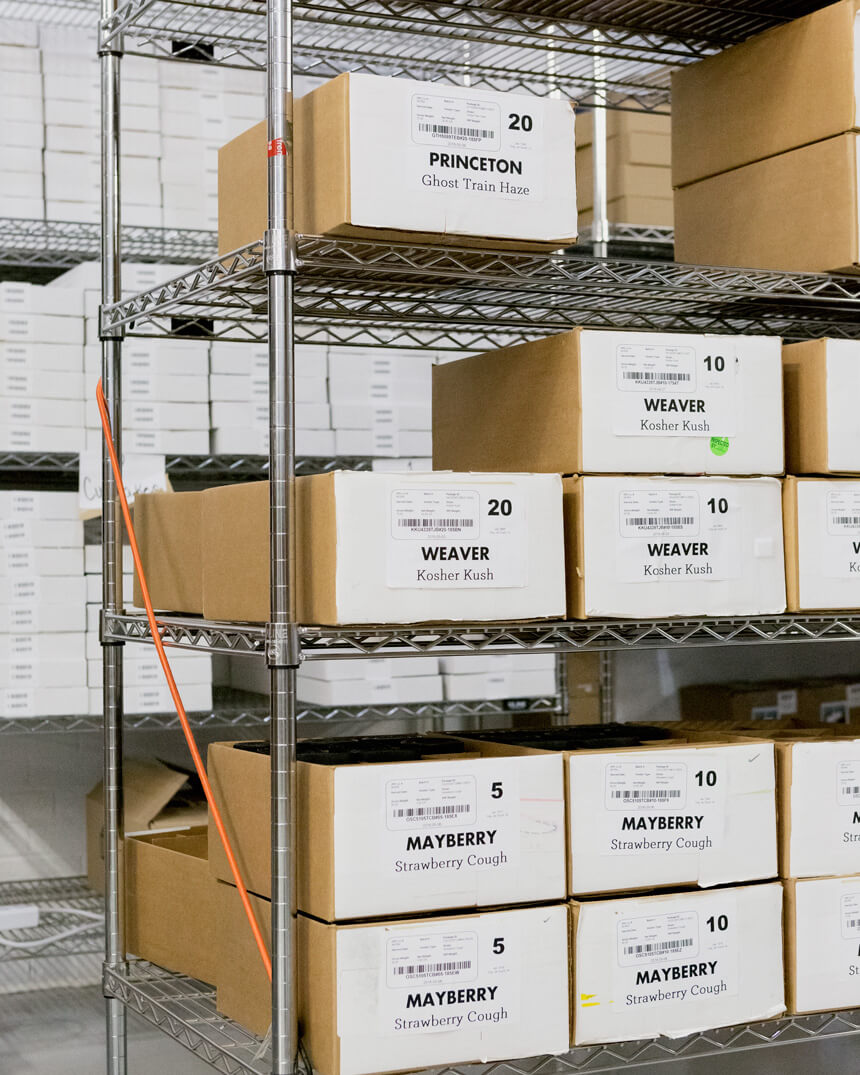
Tweed managed to obtain some marijuana seeds through the old MMAR, but its owners felt they needed more. On March 30, 2014, Rifici flew to Kelowna to collect what he believed to be legally obtained product—the police, though, suspected it was black-market bud. The next day, a team of plainclothes RCMP officers descended on the tarmac just before Rifici could start loading the cargo onto a chartered plane headed for Ontario. The shipment was seized, but no charges were laid. Still, the hangover from that encounter made it difficult for the team to celebrate four days later when the company was listed on the TSX Venture. It was eight months behind on planned marijuana production. The construction costs alone were pushing the company to the brink of insolvency. It was fighting powdery mildew. Plants were dying. Most problematic of all, patients were telling them their bud was awful.
Externally, they projected an image of confidence. On June 16, 2014, at the factory’s grand opening, the mayor of Smiths Falls cut the ribbon for the cameras while a helicopter filled with the company’s biggest Bay Street investors landed on the front lawn. Two months later, Rifici was fired. He has since filed a lawsuit seeking a year’s salary—$230,000—for breach of contract and wrongful dismissal, plus $100,000 extra in damages. Tweed has filed a counterclaim alleging that Rifici “became increasingly obstructive” and pointed out that his stock on the day he was fired was valued at $21 million. (Rifici has denied allegations of any wrongdoing.)
A stream of corporate executives interviewed for Rifici’s old job. When none panned out, Linton, who was still chairman of Tweed’s board, became interim CEO and elevated Zekulin to president. The interim part of Linton’s title has since disappeared, and under his leadership, the company has grown so much that its market cap is now higher than those of its two largest competitors combined.
By the time the federal Liberals swept into power in 2015 and announced they intended to legalize marijuana for recreational use, Canopy Growth owned two very distinct brands: Bedrocan, the most reputable brand in the medicinal-marijuana business, whose products Linton hoped would become as recognizable as Tylenol in pharmacies; and Tweed, which had rebranded the street names of its most popular strains. Old monikers—UK Cheese, Super Lemon Haze, and AK-47—were replaced with the more refined-sounding Balmoral, Houndstooth, and Herringbone. These products were joined by new Tweed-based inventions such as the mildly psychoactive CBD blend it calls “Watson,” after Sherlock Holmes’s colleague, and the more powerfully psychoactive blend it calls “Livingstone,” after the explorer who wandered deep into the heart of Africa and never came back.
It was all part of a strategy to provide Tweed with a lineup of combustible marijuana strains that could compete with Highland Scotch and Napoleon brandy on liquor-store shelves.
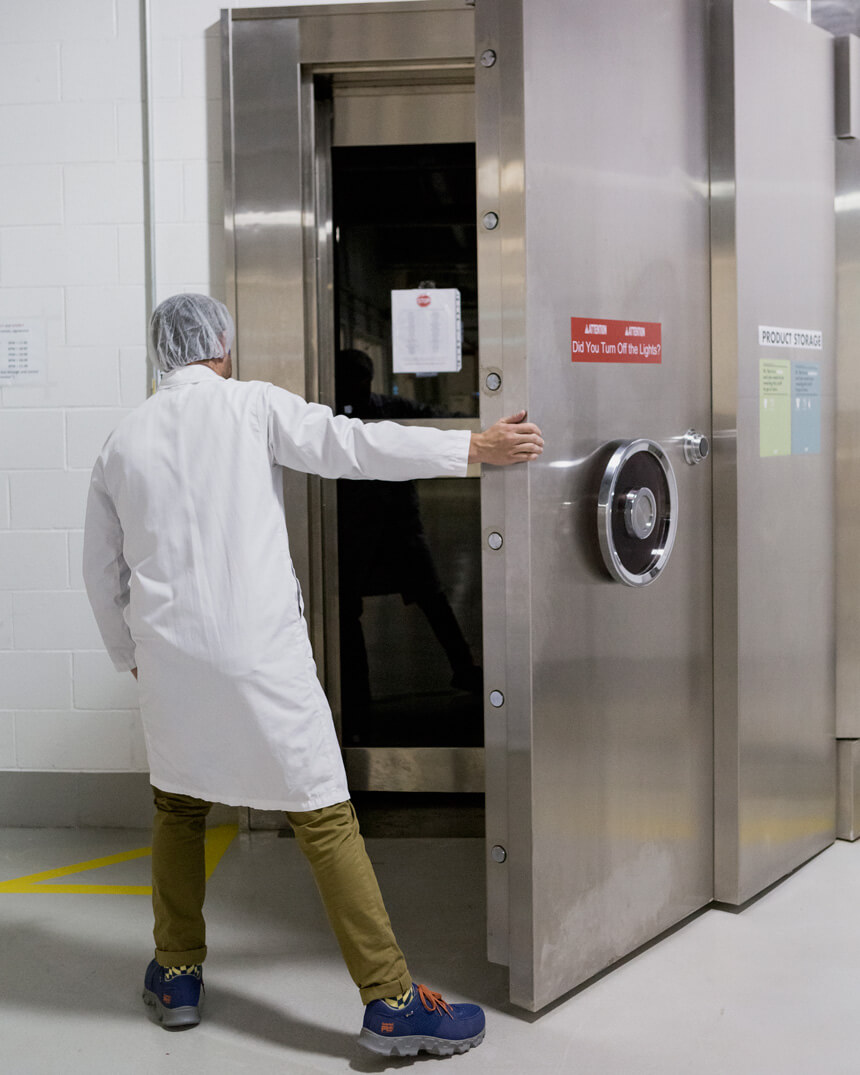
Zekulin reached over his lunch—a bacon-and-egg bagel—and hung up on the conference call he’d been listening to for more than an hour inside an office he kept on the thirty-fourth floor of First Canadian Place in Toronto. It was 3 p.m., and he was exhausted. On the other end had been a group of German businessmen. Under the terms of the partnership they were discussing, Tweed would invest expertise and money in a planned grow op in Germany, and also, laws permitting, execute the first legal export of dried cannabis from Canada.
Zekulin had come to Toronto from Ottawa to bring Tweed’s new creative director, Martin Strazovec, up to speed. A bearded rocker-type, Strazovec had two decades of experience in ad agencies, and had spent the last five years working primarily on customer-loyalty programs.
The company had a hip yet sophisticated aesthetic that Zekulin wanted reflected in everything, even the brown paper bags filled with Amanda’s cupcake mix that were sold alongside cannabis oils in its online store. (Amanda is the company’s head of medical outreach—her face is on the packaging.) On any given weekday, bins filled with 750 orders of everything from cannabis oil to jarred bud were rolling off one of the four loading docks behind a barbed-wire fence on Hershey Drive. Tweed had already hired a Harvard-educated efficiency expert; he now spent his days implementing “the Toyota Way,” which involved streamlining production in preparation for the influx of recreational clients. But it was important that Tweed become a cultural brand, as well as a retail product, and that’s where Strazovec came in.
Zekulin laid bare the company vision: “We are beautifully set up for the next year and a half. But we need to get the experience perfect right now, on the packaging of the weed. When you open a jar from Tweed, we want the user experience to begin.”
Strazovec chimed in. “It’s similar to what Apple does with their products. It goes right down to the box.”
Zekulin nodded. “Minimalist, but memorable,” he said.
Then he moved on to the vision for the online store. “We want the site to feel like Holt Renfrew. You know the brand. You like the brand. You go there for the brand, but you also go there to get Hugo Boss.”
If Tweed was Holt Renfrew, then Leafs by Snoop was its Hugo Boss.
It was Snoop’s people who reached out first, looking for a Canadian partner to license the rights to Leafs by Snoop, the rapper’s personal brand of THC-heavy weed. First, there were emails, then phone calls, and finally visits to both the factory and the Farm. And though he wasn’t the only celebrity trying to capitalize on his image as a cannabis connoisseur—Woody Harrelson, Willie Nelson, and the children of the late Bob Marley have all been involved in marijuana businesses—Snoop was the first. His product was available only in Colorado, but he wanted to expand. His team looked north and soon read about the guys in the chocolate factory.
Zekulin handled the Snoop file, picking up members of the rapper’s entourage from the airport in his wife’s Subaru and driving them to the factory and the Farm and then back to Toronto. He’d spent months negotiating a deal that would see Tweed pay Snoop in stock and cash in return for the exclusive right to package some of Tweed’s most potent strains under Snoop’s corporate name and sell them through its online store.
The deal closed in mid-February 2016—the same week the NBA All-Star game was held in Toronto. While Linton was giving Liberal MP Bill Blair (former Toronto police chief and the government’s point person on the legalization of marijuana) a guided tour of the Bedrocan facility, Zekulin met Snoop in an icy park for a photo shoot. Tweed got its shots and sent them out over the newswire along with a vague press release announcing the partnership. Zekulin never expected the photo and headline to make it onto the Thomson Reuters billboard in Times Square, but it did—and stayed there for a day.
It didn’t take long for the company to feel blowback from doctors who didn’t like the idea of writing medical scrips for cannabis from a company that had Snoop Dogg as a brand ambassador. “We no doubt lost some patients from that deal,” Zekulin said. “But we’d do it again.”
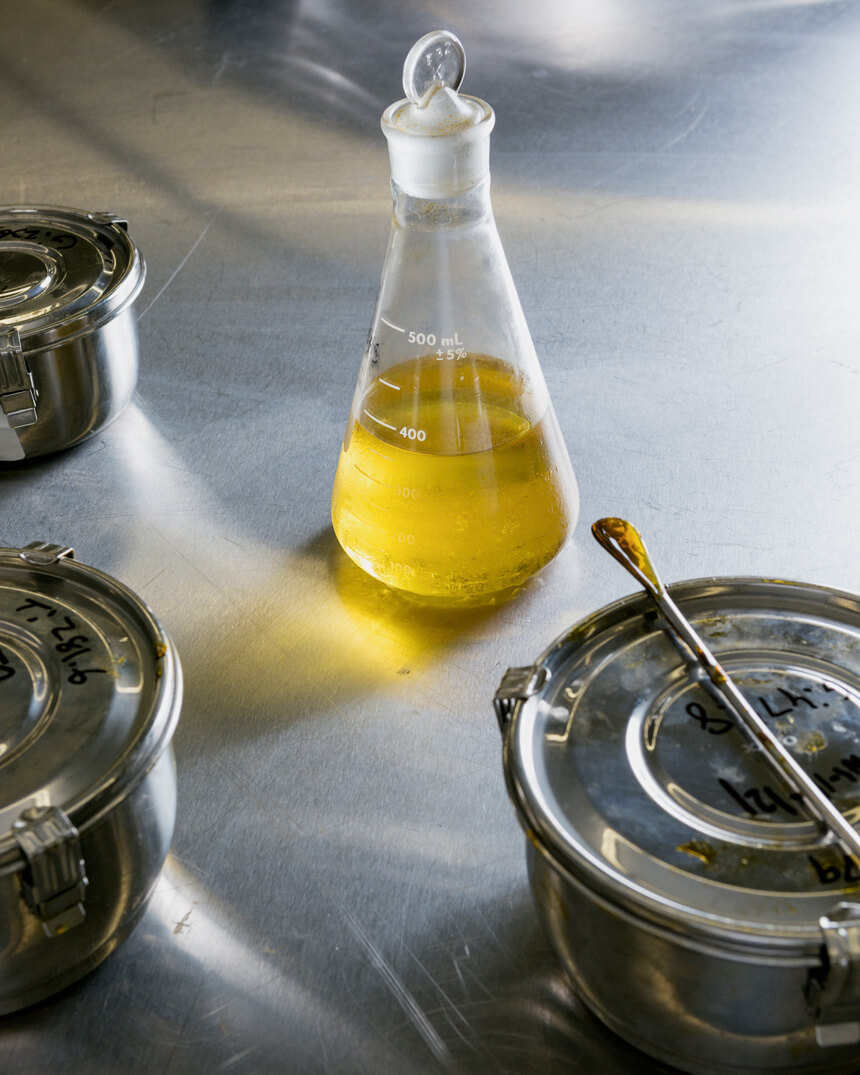
It was harvest day in Smiths Falls, and Zekulin, dressed in a white lab coat, was giving a guided tour to Andrew Murie, the CEO of MADD Canada, the Canadian chapter of the US non-profit group Mothers Against Drunk Driving. Tweed had agreed to give an undisclosed amount to Murie’s organization for a campaign warning of the possible dangers of toking and driving. But the money would only go so far.
“We have a lot of concerns about the lack of data that’s out there,” Murie said. “Nobody knows right now how long you should wait after you smoke before you drive.”
“We’re trying to get ahead of this,” Zekulin replied. “The last thing we want is for somebody with legally purchased cannabis to crash a car and kill someone.”
In the factory, Zekulin pointed out mammoth vats that had once housed corn syrup but now held water that waited for vital plant nutrients to be stirred into it with the help of repurposed industrial-size candy mixers left behind by the Hershey Company. A steady stream of botanists and horticulturalists with clipboards and thermometric tools passed the men by.
“Everything feels a bit like an alien hatchery in here,” Zekulin said as he made his way toward the windowed door of the so-called mother room. Murie peered through the window at thirty different types of tall, thickly branched “mother plants” resting on steel tables in pots filled with ground-up coconut shells. For the sake of product consistency, Zekulin said, Tweed no longer grows anything from seeds, preferring to clip branches from the mother plants and move them into what was known as the clone room. There, each plant was tagged with a loose-fitting medical band that would help trace it back to its mother. After spending two weeks growing under twenty-four-hour fluorescent lights, the plants would be transferred into the “vegetative room.” Then came the twelve “flowering rooms,” where, behind a door of pressurized air, they’d flower for eight weeks while being exposed to cycles of twelve hours of intense light and twelve hours of total darkness. Entering any of the flowering rooms required changing out of the lab coat and into something resembling a haz-mat suit.
Each room housed 500 plants. Once fully flowered, these plants are cut into pieces and their branches are rolled into a trim room, where trained barbers clip buds while bobbing their heads to the sound of Rick Dees Weekly Top 40. After it’s dried and cured, the weed is sealed into airtight buckets valued at $9,000 each, then rolled into a massive security vault with a capacity of up to $150 million in inventory.
“We’ve got three of these now,” Zekulin said. “This one, plus the one in Scarborough and a brand-new one at the farm in Niagara.” (The vault in Niagara was built so that the company would no longer have to transport plants all the way from the Farm to the factory to be legally trimmed.)
Last on the tour was the “extraction room,” where lab technicians laboured over machines that looked like paint mixers as they converted resin extracted from the plants into a dark substance that resembled a cross between tar and molasses. Zekulin said the crude-oil extract was akin to moonshine, because it had an 80 percent THC content. But he explained that Tweed had ways of diluting the concentration to accord with limits set by Health Canada—before sending the 100-millilitre bottles out the door with a $110 price tag.
“This stuff’s the future,” Zekulin said. “We already can’t produce enough oil to keep up with demand.”
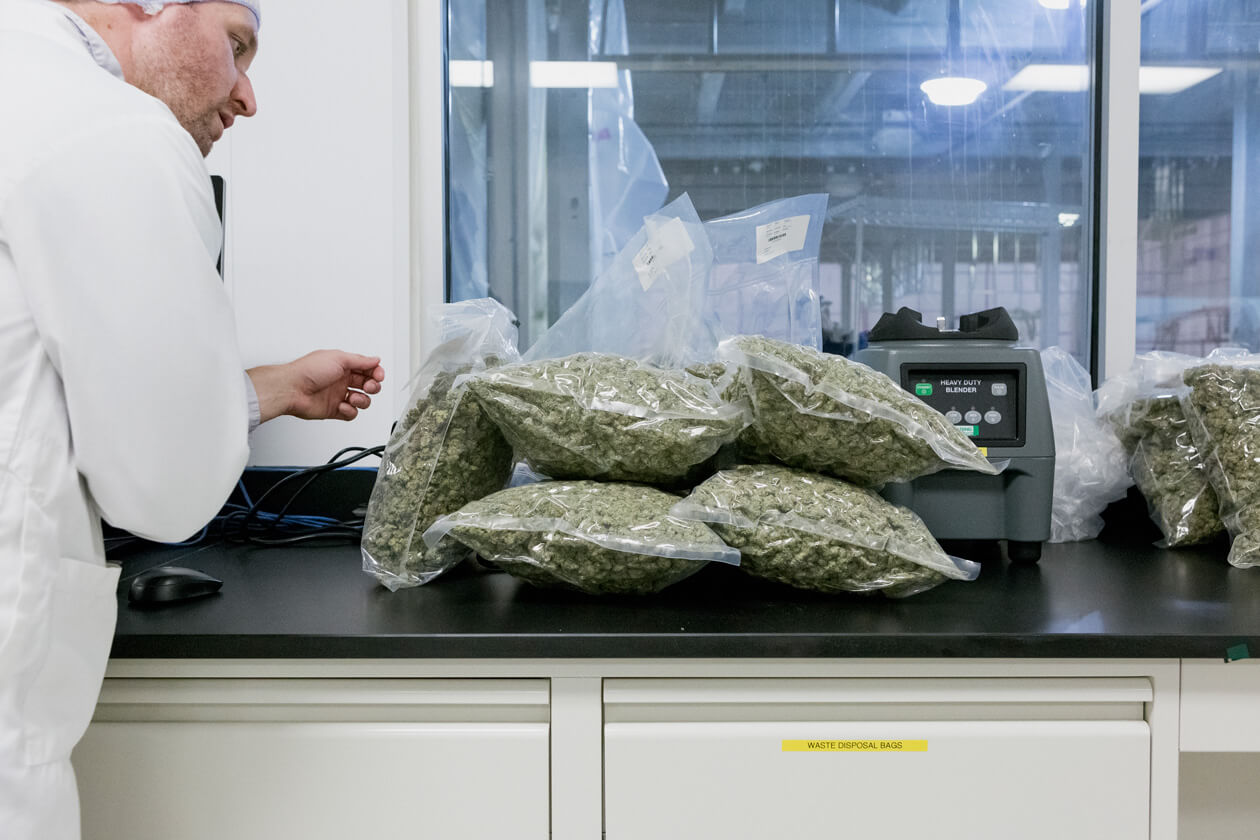
On the Tuesday morning after the Victoria Day long weekend, Linton stood under a staircase in Toronto City Hall, surrounded by a team of suits from Navigator. He’d hired the $600-an-hour PR firm mostly to lobby MPs on his behalf, but now it was helping him organize a press conference. The event was a calculated response to a decision made by the City of Toronto to hand out letters to seventy-eight of the city’s illegal marijuana dispensaries indicating they had seventy-two hours to pack up their shops. As a crowd of camera operators and reporters fixed their lenses on Linton’s face, he said he wanted everyone to know that Canopy owned the only lawful producer in Toronto (Bedrocan) and that his company would offer a same-day delivery alternative to any patients who ordered online before noon. It was a well-timed and effectively placed advertisement.
After the media had dispersed, Linton made his way to his next engagement. He rolled his suitcase through a revolving door and disappeared into the King Edward Hotel, where he was scheduled to address a gathering of established and would-be tycoons.
The financiers waited eagerly for their chance to shake his hand and give him their cards. He wasn’t the only CEO of a licensed producer in the room, but he was the one garnering the most attention. Among the rivals present was Denis Arsenault, CEO of New Brunswick’s Organigram. “I like Linton, and I like Zekulin even more,” he said. “So I’m not going to say anything negative about my competitor. But they bled nearly $4 million last quarter. We might be smaller, but we’re cash-flow positive. There’s a saying in business: make sure your home front is rock solid before you start venturing to far-off lands. Should we be on all seven continents and in the research business and studying which creams can be made out of what? It’s great for press releases, but that’s a recipe for failure.”
Soon Linton was sitting under a crystal chandelier inside an opulent domed ballroom, smiling and nodding while one of this country’s leading lawyers specializing in venture capital welcomed him to the stage as “the perfect CEO to trailblaze Canopy in this new industry and lead what will become the most diverse cannabis brand in Canada and then the world.”
Linton jumped onto the stage and began with the basics: you needed a licence and at least $10 million before you could contemplate doing what he’d done even on a fraction of the scale. He switched slides and was suddenly standing in front of a map of the world boasting his company’s logo next to Jamaica, Uruguay, Brazil, Australia, South Africa, and Germany—all countries in which he’d begun negotiating partnerships and, in some cases, exploring the possibility of setting up foreign-based grow ops.
His mic time drawing to a close, Linton drifted into a story about the time Blair had dropped by the Bedrocan grow op—without kicking down the door. The crowd laughed, and Linton shuffled off the stage while Blair—the one-time head of the city’s now-defunct “morality squad” and the person handpicked by Trudeau to spearhead marijuana reform—made his way toward the podium. The legitimized drug dealer in the crisp blue suit, having just outlined his plan for a global empire, now passed the microphone to a retired cop who was trying to pull the force off the front line of the war on drugs.
Blair quickly detailed why he no longer believed in the prohibition of a drug that, in 2015, 20 percent of Canadians admitted to having used the year before. He said that once a legitimate recreational model emerged and legal marijuana was being properly regulated and sold, the country would see not only less use among youth, but also a massive reduction in gang violence. He said marijuana had been the main source of economic profit for organized crime throughout his entire career. And only now was he actually going to be able to do anything major to stop it.
Then Blair described a future in which medicinal and recreational marijuana markets existed independently of one another, and told the financiers what they already knew: from the ashes of a criminal industry, billions of dollars would soon be flowing into a fresh set of hands. And though he made it clear there’d be room for business to make its money, he made it even more clear that he didn’t give a damn about the brands. All he cared about was getting the criminals out of the game and getting joints out of kids’ hands.
“We don’t want to be seen as promoting the use of marijuana,” he said. “I believe marijuana is not a benign substance. There’s a lot of science that says the developing or adolescent brain is put at greater risk with marijuana, and there is certainly an age below which it should not be used. We’re going to really educate people.”
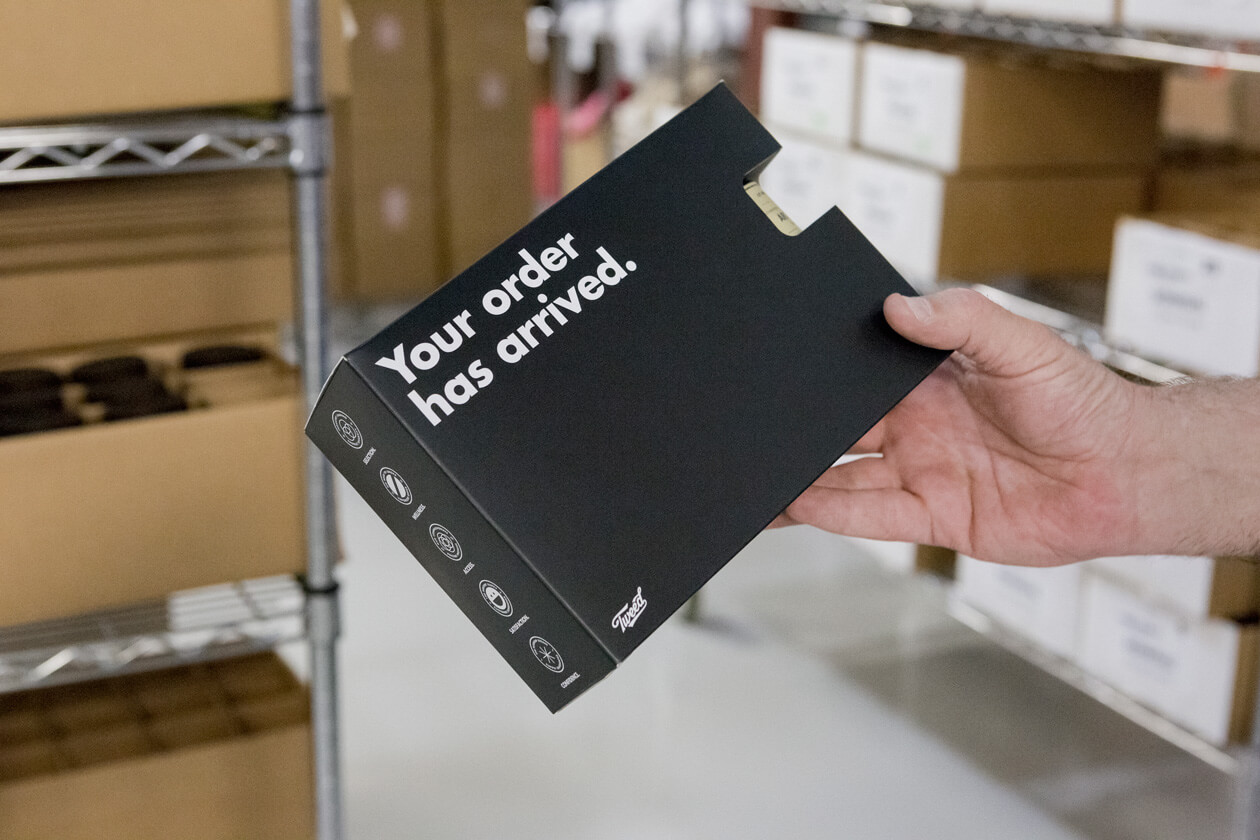
The day after Linton headed home to Ottawa, police officers spread out across Toronto and raided forty-three marijuana dispensaries, arresting ninety people and laying 186 trafficking charges. They seized cannabis, resin, hashish, pills, chocolate, cookies, candies, bars, e-cigarettes, drinks, oils, and spreads. Then they packaged it all into garbage bags, laid a fraction of the loot on the ground and on tables inside police headquarters, and hosted a press conference to inform citizens that, for the time being, the laws against marijuana trafficking were still in effect.
Marc Emery, the outspoken self-proclaimed “Prince of Pot,” and his wife, Jodie, took to the city’s streets with megaphones and protested what they called a reversion to the prohibition policies of old. Emery, who spent almost five years in a Mississippi prison for flouting US federal law after mailing marijuana seeds from BC into the States, was somewhat less conspicuous than his wife, who crashed the press conference, scolded Toronto’s police chief, and then bad-mouthed licensed producers.
“This is about the corporate profits of stock-market businesses that have sent police to arrest people to protect their own financial interest,” she said. “That is sick and disgusting.”
Soon, Linton and Zekulin began attracting ire on the street and social media. They were being accused of selling out everyone else in the industry, of teaching police how to differentiate between legal marijuana and the knock-off stock, and of trying to shut everyone but themselves out of the market. It didn’t help Tweed’s reputation with the dispensary crowd that its largest shareholder had once been the CFO of the federal Liberals. Or that Zekulin had previously worked for Ontario’s finance minister. Or that Linton had just introduced the former chief of the Toronto Police Service to a bunch of Bay Streeters looking to cash in on a plant that the Emerys and others believed every human had the right to access. To many, Canopy had become just another economic juggernaut.
Both Linton and Zekulin spent most of the day on television or on the phone with newspapers, trying to debunk the “conspiracy theories” and play down their company’s size and power. Zekulin slept in a Toronto hotel that night. The next morning, he looked like a man who’d been up in the dark reading all the nasty things being said about him on Twitter. He tossed his wrinkled blazer into the backseat of his rental and beat a quick retreat, passing the shuttered remnants of Toronto’s dispensary scene before heading up to Barrie, Ontario, for a ribbon-cutting ceremony at Tweed’s latest creation, Tweed Main Street—a classy storefront that looked like an up-market dispensary although it sold coffee, T-shirts, and mugs.
The shop was tucked between a payday-loan store and a movie theatre. Billed as a drop-in centre that would help would-be patients find compassionate doctors willing to write scrips for medicinal marijuana, it was a way to get the name, brand, and, even more importantly, the image of “a hip yet professional company” out into the community. There were already three Tweed Main Street shops in Ontario, and many more were planned for other markets across the country. The closest thing to actual marijuana on offer? Pamphlets that put a Tweed spin on the old psychotropic favourites from the street: “Some people find Houndstooth (Super Lemon Haze) helpful with stress relief, pain management and appetite stimulation.”
The ribbon cut, Zekulin ate cake and stood on the sidewalk greeting prospective patients, who were arriving by skateboard with black-market THC sodas already in hand and filtering out of the payday-loan place next door. Then he got back in the car and turned on the air conditioning. It was Friday afternoon and it was hot—and while Linton was off somewhere “kicking the tires” of a small licensed producer he hoped to buy out of the game, Zekulin was heading north. He shook his head as he thought back to their first meeting, over a plate of meatballs, and how excited he’d been when Linton had asked him whether he’d be interested in going into parking meters.
“Shit,” Zekulin said. “That wasn’t even three years ago.”
“It wasn’t easy jumping into this. My dad didn’t really want me to do it. My grandmother still just smiles and nods when I talk about what I do, but she’ll never come around. That’s just how it is.”
He took a right off the highway and drove over a bridge—before long, we were parked on the side of a gravel road and looking out at a 100,000-square-foot chunk of land nestled between a forest and a field. It seemed as good a place as any to build another greenhouse. The company was still young, but it was high time to get growing.
This appeared in the September 2016 issue under the headline “The Boys from the Chocolate Factory.”

